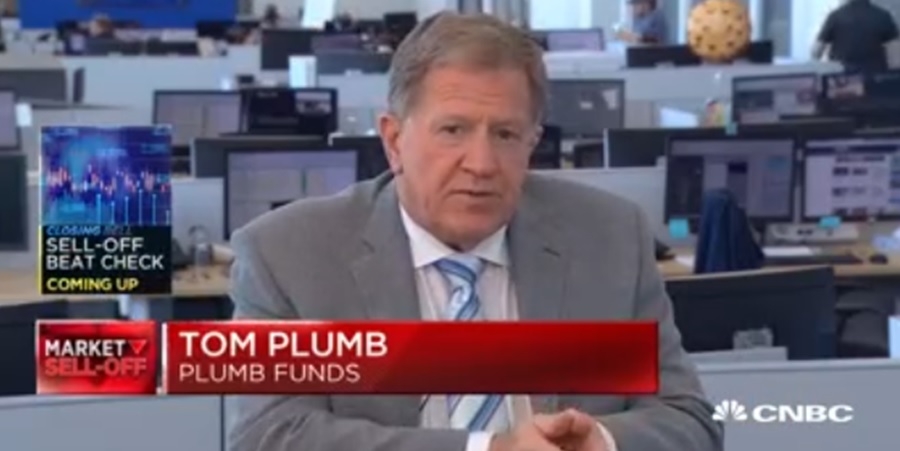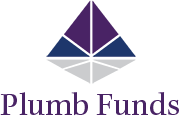
Balanced investing makes sense to help offset some volatility in the market in Tom Plumb’s opinion. He tries to participate in the long-term nature of the stock market but moderate with bonds to offset significant downdrafts.
Opinions expressed are those of the author or Plumb Funds and are subject to change, are not intended to be a forecast of future events, a guarantee of future results, nor investment advice. References to other mutual funds should not be interpreted as an offer of these securities.
By clicking the link you are leaving the Plumb Funds site and entering a third party site. The Plumb Funds are not responsible for any information contained on the third party site.
Performance data quoted represents past performance and does not guarantee future results. The investment return and principal value of an investment will fluctuate so that an investor’s shares, when redeemed, may be worth more or less than their original cost. Current performance of the fund may be lower or higher than the performance quoted. Performance data current to the most recent month end may be obtained by calling 1-866-987-7888 or visiting www.plumbfunds.com.
Click here for holdings and most recent quarter-end performance for the Plumb Equity Fund.
Click here for holdings and most recent quarter-end performance for the Plumb Balanced Fund.
Fund holdings are subject to change at any time and should not be considered a recommendation to buy or sell any security.
Dow Jones Industrial Average (“Dow”) is an unmanaged index of common stocks comprised of major industrial companies and assumes reinvestment of dividends.
NASDAQ Composite Index is a market capitalization-weighted index that is designed to represent the performance of the National Market System which includes over 5,000 stocks traded only over-the-counter and not on an exchange.
Russell 2000 Index consists of the smallest 2,000 companies in a group of 3,000 U.S. companies in the Russell 3000 Index, as ranked by market capitalization and serves as a benchmark for small-cap stocks in the United States.
S&P 500 is an unmanaged index which is widely regarded as the standard for measuring large-cap U.S. stock market performance.
One cannot invest in an index.
Stocks are generally perceived to have more financial risk than bonds in that bond holders have a claim on firm operations or assets that is senior to that of equity holders. In addition, stock prices are generally more volatile than bond prices. Equities, bonds, and other asset classes have different risk profiles, which should be considered when investing. All investments contain risk and may lose value.
As of 6/30/2019 Morningstar rated the Funds as follows: Equity Fund 3, 5, 4, and 2 stars for Overall, 3, 5 and 10 years among 1235, 1235, 1100, and 812 Large Growth Funds; Balanced Fund 5, 5, 5, and 4 stars for Overall, 3, 5 and 10 years among 679, 679, 595, and 431 Allocation-50% to 70% Equity Funds based on risk adjusted returns. The Morningstar RatingTM for funds, or “star rating”, is calculated for mutual funds, variable annuity and variable life subaccounts, exchange-traded funds, closed-end funds, and separate accounts) with at least a three-year history. Exchange-traded funds and open-ended mutual funds are considered a single population for comparative purposes. It is calculated based on a Morningstar Risk-Adjusted Return measure that accounts for variation in a managed product’s monthly excess performance, placing more emphasis on downward variations and rewarding consistent performance. The top 10% of products in each product category receive 5 stars, the next 22.5% receive 4 stars, the next 35% receive 3 stars, the next 22.5% receive 2 stars, and the bottom 10% receive 1 star. The Overall Morningstar Rating for a managed product is derived from a weighted average of the performance figures associated with its three, five, and 10-year (if applicable) Morningstar Rating metrics. The weights are: 100% three-year rating for 36-59 months of total returns, 60% five-year rating/40% three-year rating for 60-119 months of total returns, and 50% 10-year rating/30% five-year rating/20% three-year rating for 120 or more months of total returns. While the 10-year overall star rating formula seems to give the most weight to the 10-year period, the most recent three-year period actually has the greatest impact because it is included in all three rating periods.
The Morningstar Rankings represent a fund’s total-return rank relative to all funds that have the same Morningstar Category. The highest percentile rank is 1 and the lowest is 100. It is based on Morningstar total return, which includes both income and capital gains or losses and is not adjusted for sales charges or redemption fees.
© 2019 Morningstar, Inc. All rights reserved. The information contained herein: (1) is proprietary to Morningstar and/or its content providers; (2) may not be copied or distributed; and (3) is not warranted to be accurate, complete, or timely. Neither Morningstar nor its content providers are responsible for any damages or losses arising from any use of this information. Past performance is no guarantee of future results.
CATEGORIES
SIGN UP FOR THE PLUMB LINE
STAY UP TO DATE ON OUR CURRENT INSIGHTS AND PORTFOLIOS.
